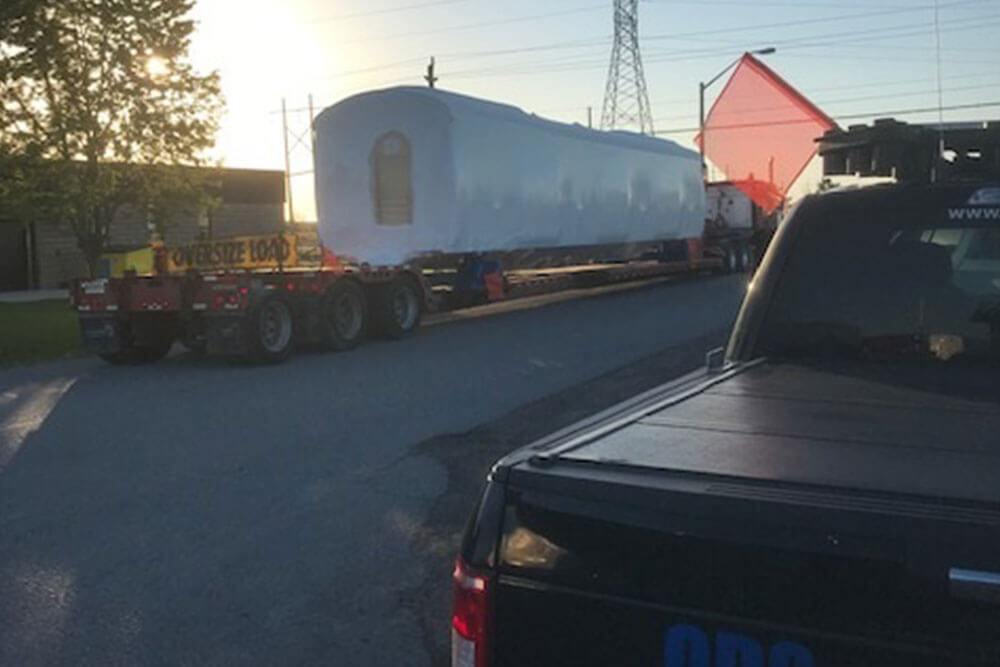As the fall season approaches in the United States and Canada, pilot car drivers face unique challenges when navigating narrow roads. The changing foliage and weather conditions can make road travel more hazardous for oversized loads requiring pilot car escorts. To ensure safe and efficient transport, it is crucial for pilot car drivers to adhere to best practices during this time of year. Here are some essential tips for pilot cars navigating narrow roads in the fall:
1. Understand Local Regulations
Before embarking on any journey, pilot car drivers must familiarize themselves with the specific regulations governing oversized load transport in the region they will be traveling through. Each state and province may have different requirements regarding pilot car escort vehicles, signage, and procedures. By staying informed and compliant with local regulations, pilot car drivers can help prevent unnecessary delays and ensure the safety of all road users.
2. Conduct Pre-Trip Inspections
Prior to setting out on a trip, pilot car drivers should conduct thorough pre-trip inspections of their vehicles and equipment. This includes checking the condition of tires, lights, brakes, and signage to ensure everything is in proper working order. During the fall season, inclement weather such as rain, fog, or early snowfalls can create additional hazards on the road. By being proactive and addressing any maintenance issues before departure, pilot car drivers can reduce the risk of accidents and delays.
3. Use Proper Signage and Lighting
Visibility is crucial when navigating narrow roads, especially during the fall when daylight hours are shorter and weather conditions can be unpredictable. Pilot car drivers should equip their vehicles with high-visibility signage, flags, and flashing lights to alert other motorists to the presence of an oversized load. Using reflective tape and bright colors can help enhance visibility in low-light conditions, reducing the likelihood of accidents and improving overall road safety.
4. Communicate Effectively with Truck Drivers
Effective communication between pilot car drivers and truck drivers is essential for a successful oversize load transport operation. Pilot car drivers should establish clear communication channels with truck drivers to relay important information about upcoming road conditions, obstacles, and traffic conditions. Maintaining constant communication throughout the journey can help truck drivers make informed decisions and safely navigate narrow roads during the fall season.
5. Stay Alert and Focused
Driving a pilot car escorting an oversized load requires heightened attention and focus, especially when traveling through narrow and winding roads. The fall season can bring unique challenges such as wet leaves on the road, reduced visibility due to fog or rain, and wildlife crossing the road. Pilot car drivers must remain alert at all times, anticipate potential hazards, and be prepared to react quickly to changing road conditions to ensure the safe passage of oversize loads.
6. Plan Ahead for Rest Stops and Fueling
When navigating narrow roads in the fall, pilot car drivers should plan their routes carefully and identify suitable rest stops and fueling stations along the way. Fall weather conditions can be unpredictable, so having a well-thought-out plan for scheduled stops can help pilot car drivers mitigate risks and avoid unnecessary delays. By ensuring that both the pilot car and the truck have enough fuel and rest breaks, drivers can maintain their focus and energy levels throughout the journey.
Final Thoughts
As the fall season brings changing weather and road conditions, pilot car drivers must adopt best practices to safely navigate narrow roads in the United States and Canada. By understanding local regulations, conducting pre-trip inspections, using proper signage and lighting, communicating effectively with truck drivers, staying alert and focused, and planning ahead for rest stops and fueling, pilot car drivers can enhance road safety and ensure the successful transport of oversize loads. Following these best practices will not only benefit pilot car drivers but also contribute to a safer and more efficient road transport system overall.

